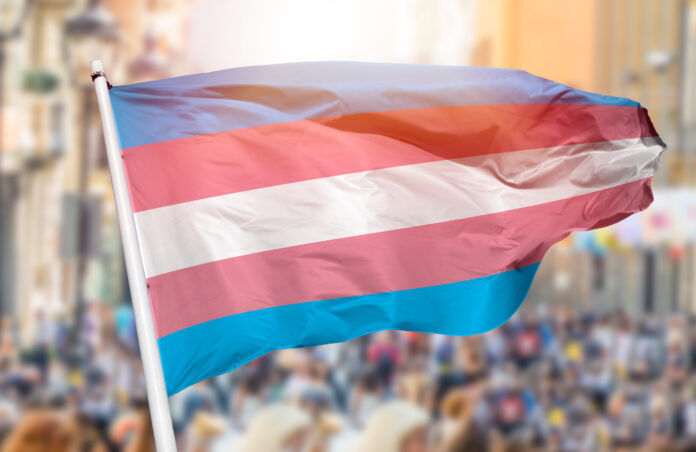The legislative session has started in statehouses across the country, and with it, scores of new anti-LGBTQ and anti-trans bills. Many of these, of course, build on legislation introduced in the last year or two, including, of course, Florida’s HB 1557, popularly known as the “Don’t Say Gay” bill.
In its most basic form, HB 1557 states that public school teachers may not instruct on sexual orientation or gender identity in grades kindergarten through third grade, but in practice its wording is so vague as to cause any LGBTQ content to be scrubbed from Florida schools by both overly-cautious and deliberately malicious school administrations.
For those of us who are transgender or non-binary, as well as our siblings in the larger LGBTQ movement, we know that laws like this seek to hide our existence and, by extension, erase us from history.
I know that way back, when I first was looking for information about just what it means to be transgender, I had to rely on my local public library — and I found it lacking in any texts about trans issues.
This was at a time, of course, when there simply were less texts to be had and, when they did exist, they were less likely to be carried in a smaller library. Even the bigger-name autobiographies of the time were simply unavailable.
To my young eyes back then, back before the access afforded by the Internet, this meant that we simply did not exist, aside from some far-off whisper. We were relegated to tabloid fodder and tawdry magazines.
What I did not know is that we have a rich history.
There are, of course, stories of transgender people back to the dawn of recorded history. There are tales that date back 4500 years ago of the Gallae, trans priestesses in ancient Sumeria, ancient rulers who may have been trans, and many more tales in the Middle Ages, Renaissance, and beyond. This, too, discounts scores of other cultures outside the Western World, where gender has long been a far more expansive concept.
There were trans people in the early US colonies, in the Revolutionary War, and in the Civil War, and scores were chronicled worldwide through the early parts of the last century thanks to Magnus Hirschfeld and his Institut für Sexualwissenschaft in Berlin.
It is worth noting that it was through the Institut that some of the earliest transfeminine surgical procedures were pioneered, as Dora Richter and Lili Elbe being the first two known cases of surgery that went beyond simple orchiectomy and penectomy procedures.
It is also worth pausing for a moment, and considering what happened to the Institut für Sexualwissenschaft: it was ransacked by the Nazis on the 6th of May, 1933, and its library was set to burn.
One might argue that Hitler’s faithful helped promote the first “Don’t Say Gay” laws ninety years ago. This and subsequent actions by the Nazis set back LGBTQ people for decades, and the loss of that history reverberates to this day.
Indeed, its echoes can be heard in HB 1557 and any copycat in any state legislature today. The ransacking of the Institut für Sexualwissenschaft was, for all intents and purposes, a popular political action of the time, just like we’re seeing today as “Drag Queen Storytimes” are shut down by right-wing agitators while states remove LGBTQ content from libraries, schools, and elsewhere.
In the wake of the raid, one German newspaper called the Institut “un-German,” and the Institut was forced to shut down. Hirschfeld, who was out of the country when the raid occurred, never returned to Germany. Dora Richter may have been killed in the initial raid, or a subsequent one. Many other LGBTQ people who may have benefitted from the Institut were sent to concentration camps.
This said, I also want to point out something very important:
Trans history did not end in the flames of that raid. Even as the United States entered World War II against Nazi Germany, US news magazines wrote articles about Barbara Richards, a trans woman. A few years after the war, Christine Jorgensen would push nuclear bomb tests off the front page after she sought surgery in Copenhagen. Two decades later, Lou Sullivan started FTM International, leading to a greater awareness of trans men. Countless others followed in their wake.
We took part in Stonewall, the Cooper Donuts Riot, the Dewey’s Lunch Counter Sit In, and the Compton’s Cafeteria Riot. We have learned to fight back against injustice whether it is ours, or others, who are in need.
We have also grown in visibility, from the first of us who spoke out, to those of us now in the state houses across the county. That is, when those same state houses aren’t seeking to strip us of our rights.
In these many decades we have learned to share our histories. We have written countless books, taken to the stage, the screen, and the airwaves, and have taken to the Internet from the earliest BBSes to the social media of today, just to tell our stories. Even this column is but one small part of a far larger tapestry, woven by transgender, nonbinary, and all LGBTQ people across the world.
Our rich history, once thwarted, is continuing to thrive.
Yes, the Nazis did hold back our progress — but they did not stop us any more than Ron DeSantis or any other legislature who wants to push their own version of “Don’t Say Gay” can. That is what our history — no matter who tries to hide it away — can tell us.
Gwen Smith gently suggests a protest for the 90th anniversary of the destruction of the Institut. You’ll find her at www.gwensmith.com/.
